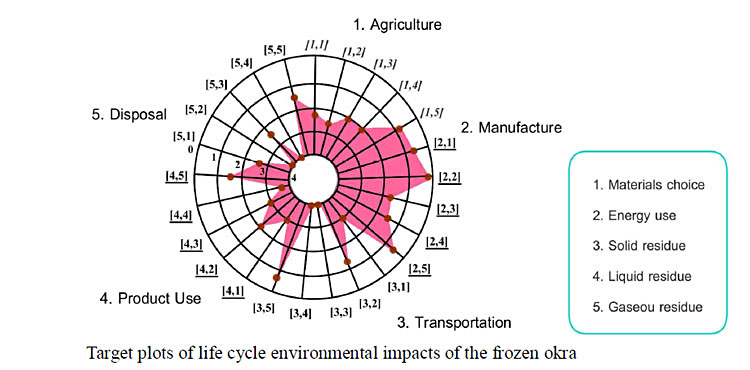Life Cycle Evaluation of Frozen Okra by Using Parameter Screening Method
Main Article Content
Abstract
Different methodologies of Life Cycle Assessment (LCA) have been developed all over the world, however, the full implementation of LCA for SMEs is difficult due to its complexity, time consumption and the high cost. These problems were partly solved by using the experience in the development of a “Streamlined LCA” for SMEs. A parameter screening method was applied in the case study of frozen okra which is just one of the highly exported agricultural products of Thailand. The life cycle environmental impacts of this product were evaluated using a method called “Environmentally Responsible Product Assessment (ERPA)”. The objective of this research was to identify and quantify the environmental impacts of frozen okra from plantation, manufacturing, transportation, consumption and disposal. The environmental impact can be classified into 5 environmental stressors, which are material procurement, energy consumption, solid waste, wastewater and air pollution. The environmental impact was assessed by rating the collection at the highest impact level for each parameter, such as fertilizers, chemical use, heavy oil use, and direct emissions from energy consumption. All of the rating values were calculated based on the panel
weighing method. Finally, the environmental stressors of the whole life cycle stage were shown in the form of target plots with a 25-element matrix. The overall rating (RERP) was 55.93, and coolant (ammonia and R-22) and energy consumption in the manufacturing stage are regarded as hot-spots. In addition, greenhouse gases from the manufacturing and transportation stages are critical parameters that need to be reduced to increase the environmental friendliness of production.
Article Details
Published articles are under the copyright of the Environment and Natural Resources Journal effective when the article is accepted for publication thus granting Environment and Natural Resources Journal all rights for the work so that both parties may be protected from the consequences of unauthorized use. Partially or totally publication of an article elsewhere is possible only after the consent from the editors.

